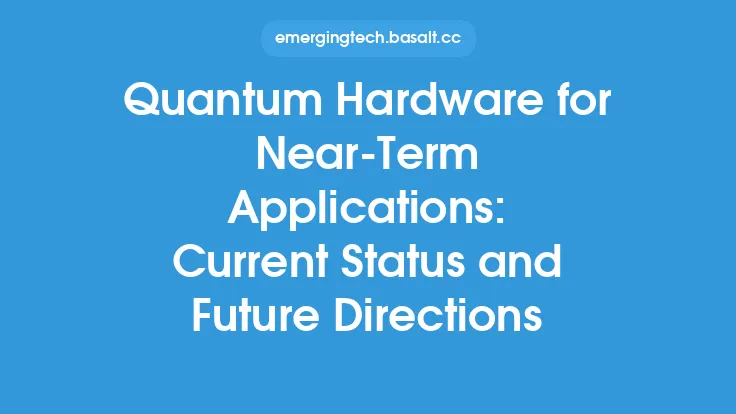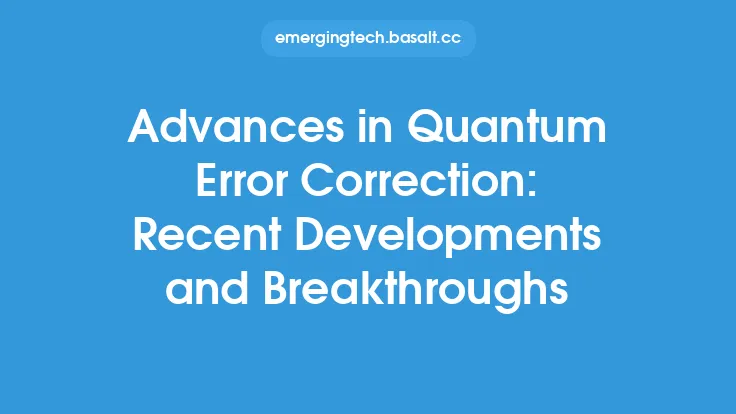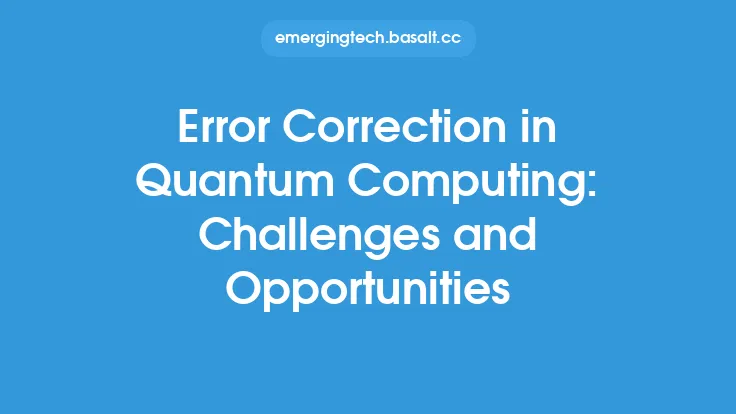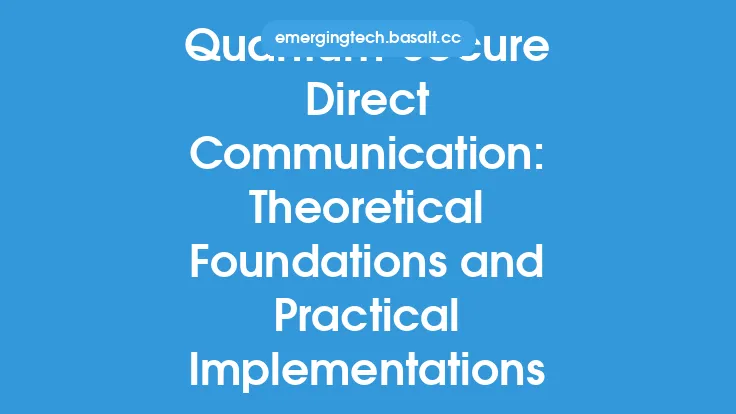The pursuit of reliable quantum computing hinges on the ability to correct errors that inevitably occur during quantum computations. Quantum error correction and fault-tolerance are essential components of quantum computing, as they enable the development of robust and scalable quantum systems. The principles of quantum mechanics, such as superposition and entanglement, make quantum systems inherently prone to errors due to decoherence and other quantum noise mechanisms. Therefore, understanding and implementing effective quantum error correction and fault-tolerance techniques are crucial for the advancement of quantum computing.
Introduction to Quantum Error Correction
Quantum error correction is a set of techniques designed to protect quantum information from errors caused by decoherence and other quantum noise mechanisms. These techniques involve encoding quantum information in a way that allows errors to be detected and corrected. Quantum error correction codes, such as quantum stabilizer codes, quantum convolutional codes, and topological codes, are used to encode quantum information and correct errors. The choice of quantum error correction code depends on the specific application, the type of quantum system, and the level of error correction required.
Principles of Fault-Tolerance
Fault-tolerance is the ability of a quantum system to continue operating correctly even when some of its components fail or are affected by errors. In the context of quantum computing, fault-tolerance is essential for large-scale computations, as errors can quickly accumulate and destroy the fragile quantum states required for computation. Fault-tolerant quantum computing involves implementing quantum error correction codes and techniques that can correct errors in real-time, without requiring the system to be restarted or reinitialized. This is achieved through the use of redundant encoding, error correction, and fault-tolerant protocols, such as quantum teleportation and quantum error correction with fault-tolerant gates.
Quantum Error Correction Codes
Quantum error correction codes are designed to protect quantum information from errors caused by decoherence and other quantum noise mechanisms. These codes work by encoding quantum information in a way that allows errors to be detected and corrected. Quantum stabilizer codes, such as the surface code and the Shor code, are a class of quantum error correction codes that are widely used due to their high error correction thresholds and relatively simple implementation. Topological codes, such as the toric code and the color code, are another class of quantum error correction codes that have gained significant attention in recent years due to their high error correction thresholds and potential for fault-tolerant implementation.
Threshold Theorem and Fault-Tolerance
The threshold theorem is a fundamental result in quantum error correction that states that, given a certain error rate, it is possible to perform arbitrarily long computations with arbitrarily high accuracy. The threshold theorem provides a framework for understanding the requirements for fault-tolerant quantum computing and has been used to establish the feasibility of large-scale quantum computing. The threshold theorem is based on the idea that errors can be corrected using quantum error correction codes, and that the probability of error correction failure decreases exponentially with the number of qubits used for encoding.
Experimental Implementations
Experimental implementations of quantum error correction and fault-tolerance have made significant progress in recent years. Several quantum error correction codes, including the surface code and the Shor code, have been demonstrated in small-scale experiments using trapped ions, superconducting qubits, and other quantum systems. These experiments have demonstrated the feasibility of quantum error correction and fault-tolerance in small-scale systems and have paved the way for larger-scale implementations. However, significant technical challenges must still be overcome before large-scale fault-tolerant quantum computing can be achieved.
Challenges and Future Directions
Despite the significant progress made in quantum error correction and fault-tolerance, several challenges must still be addressed before large-scale fault-tolerant quantum computing can be achieved. One of the main challenges is the development of robust and scalable quantum error correction codes that can correct errors in real-time. Another challenge is the implementation of fault-tolerant protocols, such as quantum teleportation and quantum error correction with fault-tolerant gates, in large-scale systems. Additionally, the development of more efficient and robust quantum error correction codes, such as topological codes, is an active area of research. Finally, the integration of quantum error correction and fault-tolerance with other quantum computing technologies, such as quantum simulation and quantum metrology, is essential for the development of practical quantum computing applications.
Conclusion
Quantum error correction and fault-tolerance are essential components of quantum computing, enabling the development of robust and scalable quantum systems. The principles of quantum mechanics, such as superposition and entanglement, make quantum systems inherently prone to errors, and therefore, understanding and implementing effective quantum error correction and fault-tolerance techniques are crucial for the advancement of quantum computing. While significant progress has been made in recent years, several challenges must still be addressed before large-scale fault-tolerant quantum computing can be achieved. Ongoing research in quantum error correction and fault-tolerance is focused on developing more robust and scalable quantum error correction codes, implementing fault-tolerant protocols in large-scale systems, and integrating quantum error correction and fault-tolerance with other quantum computing technologies.





